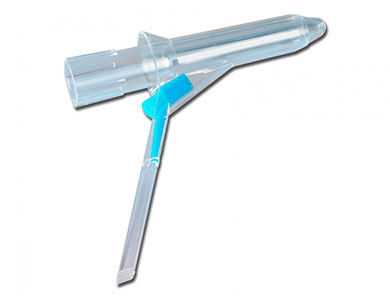Rectoscopy
What is a rectoscopy ?
 rectoscopy is a medical procedure that allows you to examine the inside of the rectum and anal canal using a rigid tube, introduced through the anus, with optical fibers for reading . This examination is recommended to identify cancer of the anus and rectum, as well as to detect other diseases that can affect the rectum and its peripheral region, such as hemorrhoids, rectal fistulas, etc. The tissues taken during rectoscopy can also be analyzed anatomopathologically.
rectoscopy is a medical procedure that allows you to examine the inside of the rectum and anal canal using a rigid tube, introduced through the anus, with optical fibers for reading . This examination is recommended to identify cancer of the anus and rectum, as well as to detect other diseases that can affect the rectum and its peripheral region, such as hemorrhoids, rectal fistulas, etc. The tissues taken during rectoscopy can also be analyzed anatomopathologically.
What is it for ?
It is essential to perform this examination for the diagnosis of rectal and anal cancer, but also to detect other diseases such as hemorrhoids, rectal fistulas or rectal bleeding. In addition to determining the diagnosis, proctoscopy can be used to guide treatments, to follow the evolution of certain conditions, to take samples for analyses, or to evaluate lesions with a view to surgical intervention, radiotherapy or curotherapeutic.
How is the exam carried out ?
In general, the examination is carried out on an outpatient basis, without anesthesia. The patient is placed on their knees or side, depending on the doctor's instructions. After lubricating the rectum, the doctor inserts a rigid endoscope, the rectoscope, into the rectum. The examination lasts a few minutes and can be carried out in town or in a hospital.
The patient must take an enema the evening before and the same day of the examination in order to clean the rectum before the examination. It is not obligatory to eat on an empty stomach. Rectoscopy may cause some inconvenience but does not cause any pain. Thanks to it, it is possible to visualize the walls of the rectum and, if necessary, to take biopsies for anatomical pathology.
Is rectoscopy painful ?
In general, proctoscopy is perceived as a painless examination, but which can be unpleasant for the patient. It is a safe and well-tolerated examination, without anesthesia, and the patient can go home immediately afterwards.
Can you eat before a rectoscopy ?
No, before a rectoscopy, it is not obligatory to fast. Before the examination, it is advisable to have a bowel movement and prepare with an enema to enter the anus one hour before the examination. Thanks to this preparation, the last part of the large intestine is cleaned so that the exam takes place in optimal conditions.
What are the differences between a rectoscopy and a colonoscopy ?
The rectal examination involves the anal canal, the rectum and a few centimeters of the sigmoid colon. This procedure is carried out using a rigid tube, the rectoscope, which is inserted into the rectum. The examination is used to diagnose, monitor and treat various conditions affecting these parts of the digestive tract, such as bleeding, gastrointestinal inflammation or cancer.
For its part, colonoscopy examines the entire colon, from the rectum to a few centimeters of the small intestine. It is carried out using a flexible endoscope, which is more tolerated by patients and allows for more in-depth exploration .Screening and diagnosis of colorectal cancer, observation of intestinal polyps and identification of different colon conditions are the main uses of colonoscopy.
In short, proctoscopy is a more specific study which focuses on the distal part of the digestive tract, while colonoscopy is a more global study which examines the entire colon.
Can rectoscopy detect rectal cancer ?
Rectoscopy helps identify lesions that may be signs of cancer located in the rectum and may be recommended in various situations, such as symptoms suggestive of colon or rectal cancer, a positive screening test (Hemocult). or if the patient presents risk factors and benefits from individual screening by colonoscopy.
When are the results of a rectoscopy available ?
During the examination, the results of a rectoscopy are not immediately accessible. It is possible to send the tissue samples taken to a laboratory for pathological analysis, which usually takes a few days to ten days.
The results will be communicated to you by the doctor who prescribed the test as soon as they are available.